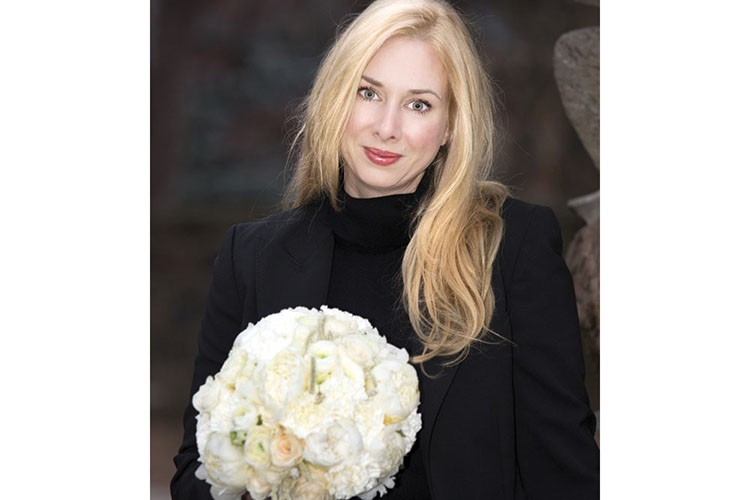Weddiquette
Who to bring, what to wear, when to leave, how much to give and why it all matters. The evolution of wedding guest etiquette.
THE PRESENT MOMENT
While the rule of thumb used to be that you pay for your plate, Toronto wedding planner Karina Lemke believes people have long been smashing that sacred proverb (often without even realizing it). With a nuptial landscape that’s greener than ever, covering your palatable plate of rosemary organic chicken, truffle risotto and the cavalcade of buttercream desserts that follow can mean dishing out $600–$1,000 per couple, if you consider the countless rounds of Cabernet that coincide. Instead, Lemke estimates that the average couple gives closer to $250–$400, regardless of how posh the property is. While you should consider boosting your busta to cushion the blow, “most etiquette experts would back up the philosophy that if you’re throwing or hosting a party, you’re doing so with the expectation of nothing in return. You’re doing it because you’re a host.” The rise of destination weddings has also ushered a new wave of gifting, which Lemke personally experienced while exchanging vows with Yuk Yuk’s founder Mark Breslin in an intimate Laguna Beach ceremony in 2010. “If you’re getting married away you have to assume that you’re not going to get very much because their contribution is the fact that they’re going — and they’ve probably spent anywhere from $3,000 to $6,000 a couple to join you for the week.” The Emily Post Institute Inc.’s etiquette blog also dispels the pay-your-plate myth, suggesting that “the amount you spend is strictly a matter of your budget, how close you are to the bride and groom and what you think is an appropriate gift.”
WHITE WEDDING
The white-dress dilemma has become somewhat of a grey area in recent years. For more traditional brides, finding out you’re not the only blanched belle of the ball can be catastrophic, while others are as cool as the liquor luge ice sculpture. “I don’t think it’s a big deal anymore. I actually love to see bridesmaids all in white, I love to see everybody in white or crème, I think it looks lovely,” says Lemke. Make a decision that leaves you some room to dance in — and if you find out the bride’s following the coloured gown trend, à la Jessica Biel and Reese Witherspoon, then white may end up being a wise hue after all. “I think as a guest you have an obligation to look lovely or to put an effort into your appearance, but I don’t think it is ever right to deliberately try to outshine the bride. If you’re putting on something that looks bridal or you think will draw a lot of attention to you, it’s probably not the best plan,” she adds. If you sense an impending train wreck, then don’t lose a friend over fashion. Oxblood and emerald will bring out your eyes.
SAVE THE DATE
You swipe the seal of a glittery, script-inscribed envelope, shake out the contents, flip the wedding invitation upside down, and finally grab a nickel out of your purse to scratch any metallic areas that might crack a “plus-one” cryptogram. Guess what, it looks like the hosts aren’t giving you the option of bringing a date. “No one wants to meet anyone new on their wedding day,” says Lemke. If you’re not married or in a committed relationship then you’d be wise to go solo, even if there is a courtesy “plus-one” stated. “I generally don’t think it’s a good idea to take someone just for the sake of taking someone. You’re there to support the people that you care about and that care about you enough to invite you. I don’t think it’s the time to introduce people to anyone.” Also, if the invitation doesn’t say “children welcome” or indicate the number of attendees, then you’re safe to assume it’s an adult-only affair. “You can call to make sure, but you should probably arrange for a sitter.”
THE ENGAGEMENT
Guests of the digital era need to be cognizant of tech-culture wedding conduct. Where there are 200 suits and gowns, there are 200 cellphones that ring, roam, buzz, snap and flash, carrying the potential to socially spoil an affair with intimate intentions. “I don’t think you should be having dinner with anyone and be texting, whether you’re at home, at a restaurant or at a wedding,” says Lemke. “If you’re there, you should be there.” That means engaging in face-to-face conversations, introducing yourself to fellow guests at your table and never making an exit before the main speeches. “Part of your obligation as a guest is to be present.”
SPIN THE BOTTLE
Late etiquette icon Emily Post once said, “The good guest is almost invisible, enjoying him- or herself, communicating with fellow guests, and, most of all, enjoying the generous hospitality of hosts.” Being invisible is a pleasant euphemism for not getting inebriated and embarrassing the hosts. Lemke recalls the horror that washed over a recent wedding when two cousins were caught in an awkward embrace on the dance floor as a result of overdoing the booze. “I don’t think it’s good to get potted at any social event,” she reiterates. In addition to drinking responsibly, you should also never be the last person left. “If the lights are on and you’re still there, leave. Quickly.”
FOOD FOR THOUGHT
According to Lemke, all allergies, whether to nuts, strawberries, gluten, lactose or shellfish, should be brought to the attention of the hosts at once, as the implications of not doing so are far greater. Keep in mind that there is a big difference between allergies and aversions. “You should be careful not to be too picky; just remember the couple has one to 200 people to accommodate and if everybody wanted special treatment, it would be impossible.” As long as ample notice is given, the venue will easily accommodate you.



















































































No Comment